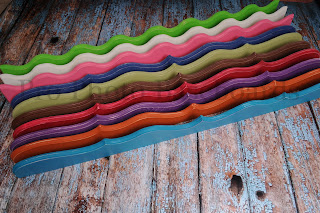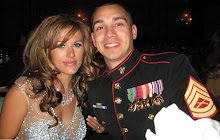This is a tutorial for my “Dust Bunny” my dust bunnies are made in all sorts of different styles, fashions, and ways. However I make these tutorials in a simplified manner so that any person can feel as though they can make these products! So although some of my dust bunnies are made as hammock dust bunnies, and in a totally different fashion, here I have simplified the technique. This is a style that is very simple for even the most uncrafty photographers out there! Make your props on your own and on a budget and get the satisfaction of completing these “high end” looking products on your own!
First step gather your supplies, you will need:
-Yarn (your color choices, and as many different styles as you like).
-Crochet hook (I used size --) don’t worry if you can’t crochet just omit this step I will explain how to make it even if you do not know how to crochet!
-Baking sheet (or two, etc)
-Scissors
-Scotch Tape
Step 2: Now you are ready to begin! I chain stitched about 40 stitches to make my dust bunny the desired length in order to cover the front of my basket (photo prop). If you do not know how to crochet no worries! Just braid your yarn to the desired length! As shown:
Step 3: Next grab your baking sheet and cut another piece of yarn to run the length of the top of your baking sheet. Make sure your yarn hangs down over the side of the baking sheet about an inch or inch and a half. Scotch tape this piece of yarn down on both sides of the baking sheet and probably one piece up at the top in the middle to hold your yarn down. Like so:
Step 4: Grab your yarn (I used several different styles and colors, use as many as you like) drape it down the backside of your baking sheet letting the loose ends hang all the way to the bottom. I actually let them hang about an inch off of the bottom for this first round because it may pull up. Like so:
Step 5: Now continue wrapping your yarn around your baking sheet, this is what it looks like wrapped around several times.
Continue this with your yarn (wrapping around) until you feel you have the desired amount for your dust bunny. Ensure that you have left your yarn ends that you taped down on the sides uncovered. Like so:
Step 7: Grab the sides of your yarn piece that you taped down, pull the tape off of the yarn ends and make LOOSE knot at the top of your baking sheet and yarn. Like so:
Step 8: Cut along the BOTTOM of your baking sheet and wrapped ends of your yarn (this is not the top where you have gathered your yarn in the knot). Like so:
Step 9: Now that you have cut along the bottom, go back up to the top of your dust bunny and tighten that knot, this keep all of you yarn gathered and keeps your workflow and space nice and neat. It also helps to keep it like this throughout the last steps when gathering the pieces you want to insert within your chain. Pictured here:
Step 10: Now take that knotted yarn and lay out your yarn nice and straight this makes it easier when gathering your pieces in order to slip it through the holes when making your dust bunny. In this picture you will see two piles, what I did was use two different sizes of baking pans. This gives more depth to my dust bunny because I will have two different lengths thus adding volume and a more texturized look of my overall piece. Piles pictured here:
Step 11: Now pick out however many pieces from your piles of yarn that you would like inserted within every hole of the chain, or the braided links of your dust bunny. I gathered about 10-15 strands to insert in every hole, add more or less according to your desires. As pictured:
Step 12: This is the hole that you will be inserting your yarn pieces in (in your chain or braided link) Start with the first hole and then insert your yarn either every hole or every other hole. Never mind the band aid, I got into a fight with my glue gun and it won.
Step 12: In this step you can see I am pointing to the first hole where I inserted my yarn pieces. As shown:
Step 13: Now tie a knot with one of your yarn pieces, this ensures that your yarn will stay in place within your dust bunny hole. After all it will probably be pulled at, tossed aside, etc. during your shoots! As shown here:
So this is about what your dust bunny should look like after the first yarn insertion:
Keep inserting your yarn until you reach the length of your chain. Tie off at the end and voila! Ready for action!
(Processed with "Color Explosion" from MCP Actions)
Please follow my blog as I am just starting it up and it is a labor of love while my husband is deployed for a year to Afghanistan, Thank you! XO-Amy Jo
You have permission to sell the items made from this tutorial, feel free to share this free tut, I ask that you do not sell this tut or alter the tut and sell as your own. Also please give credit to my blog and Morgans when selling or advertising, thank you.
Guest blogger Amy Jo Wagner, is a stay at home mom, military wife, crafter, student and photographer. As a guest blogger she hopes to teach you all how to craft on a budget for personal use or photography use . Her current eye candy comes from Morgan Kervin, Rita of The CoffeeShop Blog and Pink Paisley Photography.
"My real job is being a stellar mother and wife, my hobbies are crafting and photographing life's special moments"
Websites: http://www.mrswags80.etsy.com/
http://www.mrswaggy.etsy.com/
http://www.mgmphotography3.com/
Blog: http://monkeyandabeesittinginatree.blogspot.com/













































